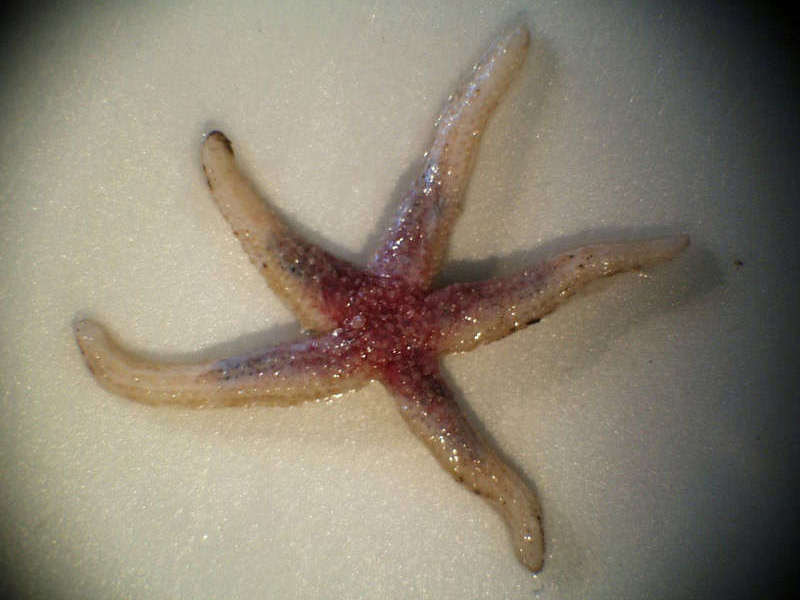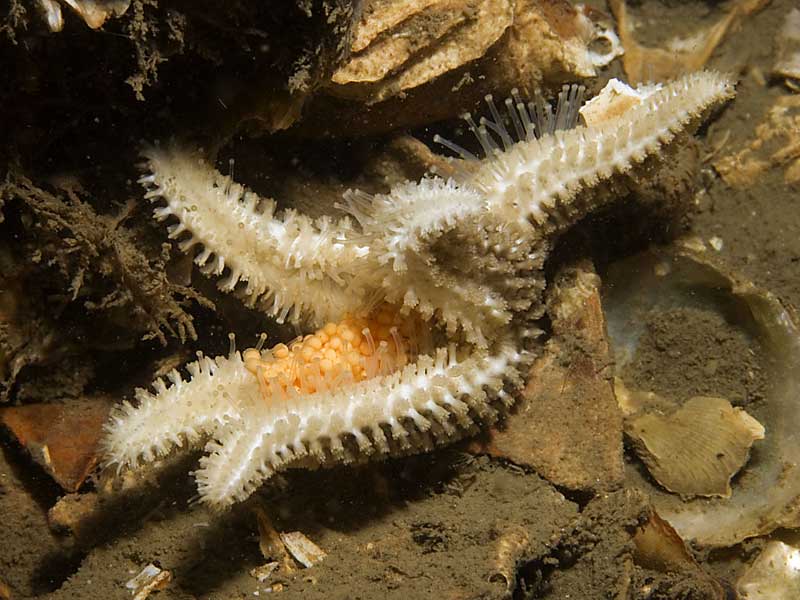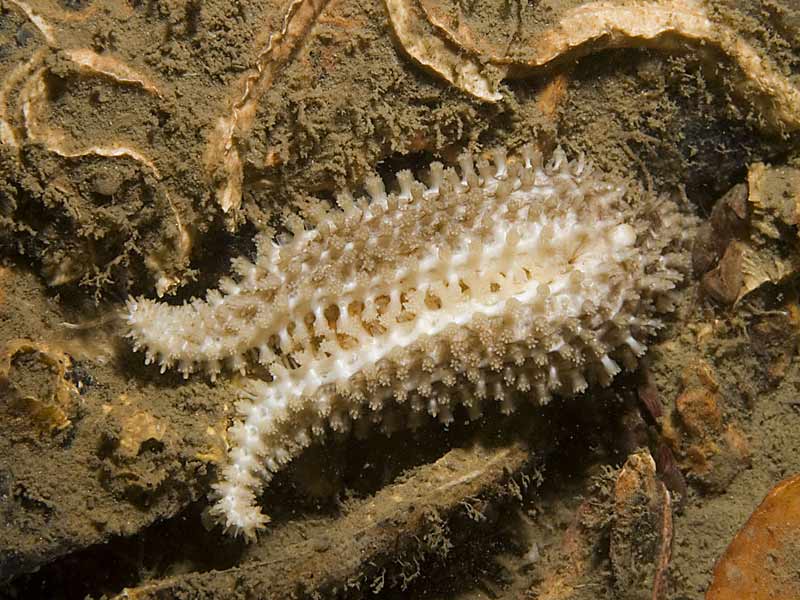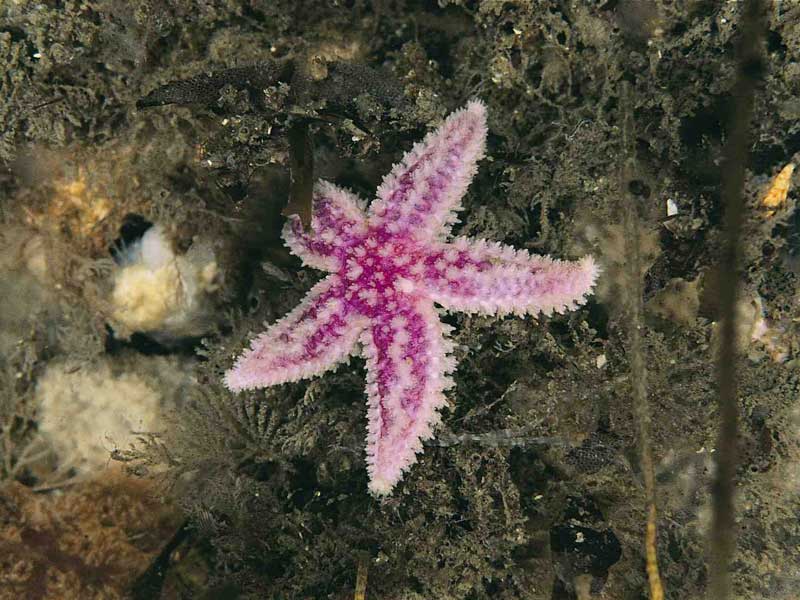Northern starfish (Leptasterias (Leptasterias) muelleri)
Distribution data supplied by the Ocean Biodiversity Information System (OBIS). To interrogate UK data visit the NBN Atlas.Map Help
| Researched by | Sonia Rowley | Refereed by | This information is not refereed |
| Authority | (M. Sars, 1846) | ||
| Other common names | - | Synonyms | - |
Summary
Description
Recorded distribution in Britain and Ireland
Common around most western British coasts with a few recordings on the east and south coasts of England.Global distribution
Found in the North Sea below Norway, north Atlantic between Iceland and Greenland as well as the northeast coast of America.
Habitat
The green morph of this species can be found intertidally under rocks and in rock pools on moderately or very exposed shores. This species can be found down to 800 m.Depth range
0-800 mIdentifying features
- A spiny starfish, typically 6 cm in diameter.
- Five arms, broad at the base but taper towards the tip.
- Four rows of tube feet bearing sucking discs.
- Colour pink, violet or green with pale arm tips.
Additional information
Leptasterias (Leptasterias) muelleri breeds during March-April and the mother does not feed during this time. She puts her arms together and raises her back to provide a protective space to place her eggs. There is no larval stage as the embryos develop and leave the mother after the first three pairs of tube feet have appeared.This speceis may be mistaken for small individuals of Marthasterias glaciallis or Asterias rubens. However, it is distinguished from Asterias rubens by densely packed spines and a single papulae, in the spaces between the spines, on its upper surface.
Listed by
- none -
Bibliography
Bruce, J.R., Colman, J.S. & Jones, N.S., 1963. Marine fauna of the Isle of Man. Liverpool: Liverpool University Press.
Gibson, R., Hextall, B. & Rogers, A., 2001. Photographic guide to the sea and seashore life of Britain and north-west Europe. Oxford: Oxford University Press.
Howson, C.M. & Picton, B.E., 1997. The species directory of the marine fauna and flora of the British Isles and surrounding seas. Belfast: Ulster Museum. [Ulster Museum publication, no. 276.]
Mortensen, T.H., 1927. Handbook of the echinoderms of the British Isles. London: Humphrey Milford, Oxford University Press.
Picton, B.E. & Costello, M.J., 1998. BioMar biotope viewer: a guide to marine habitats, fauna and flora of Britain and Ireland. [CD-ROM] Environmental Sciences Unit, Trinity College, Dublin.
Picton, B.E., 1993. A field guide to the shallow-water echinoderms of the British Isles. London: Immel Publishing Ltd.
Southward, E.C. & Campbell, A.C., 2006. Echinoderms. The Linnean Society of London. Avon: The Bath Press. [Synopses of the British Fauna No. 56.]
Datasets
Centre for Environmental Data and Recording, 2018. Ulster Museum Marine Surveys of Northern Ireland Coastal Waters. Occurrence dataset https://www.nmni.com/CEDaR/CEDaR-Centre-for-Environmental-Data-and-Recording.aspx accessed via NBNAtlas.org on 2018-09-25.
Manx Biological Recording Partnership, 2022. Isle of Man historical wildlife records 1990 to 1994. Occurrence dataset:https://doi.org/10.15468/aru16v accessed via GBIF.org on 2024-09-27.
NBN (National Biodiversity Network) Atlas. Available from: https://www.nbnatlas.org.
OBIS (Ocean Biodiversity Information System), 2025. Global map of species distribution using gridded data. Available from: Ocean Biogeographic Information System. www.iobis.org. Accessed: 2025-08-08
Citation
This review can be cited as:
Last Updated: 17/04/2008






